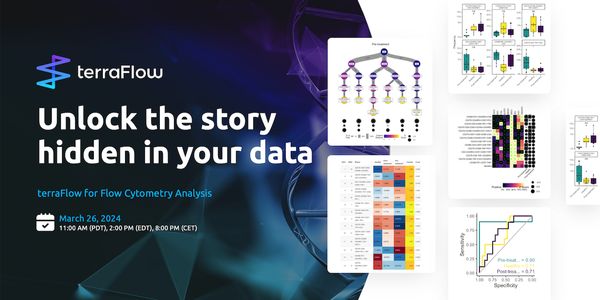Research Scientist, Eurofins Panlabs
BIOGRAPHY

MAY 25, 2016 8:00 AM PDT
Novel applications of automated electrophysiology in ion channel drug discovery
Speakers
-
Rok Cerne, MD, PhD
Principal Research Scientist, Eli Lilly and CompanyBIOGRAPHY
Event Date & Time
DATE: May 25, 2016
TIME: 8am Pacific time, 11am Eastern time, 4pm UK time, 5pm European time, 11pm Beijing time
TIME: 8am Pacific time, 11am Eastern time, 4pm UK time, 5pm European time, 11pm Beijing time
Abstract
In this two-part webinar, we will be presenting the following topics in ion channel drug discovery.
Topic 1: Novel high-throughput approach to evaluate state dependence and selectivity of voltage-gated ion channels
Speaker: Rok Cerne, Ph.D, Principal Research Scientist, Eli Lilly and Company
Voltage-gated ion channels represent important drug targets. Current drug discovery efforts targeting ion channels often focus on identifying state -dependent inhibitors, and these characterizations are traditionally done using manual patch-clamp methods. Automated electrophysiology assays were introduced to increase the throughput of electrophysiological profiling, however these assays typically relay on pulse based protocols where compound potency is affected by the mechanism of channel gating and the kinetics of compound binding.
In this webinar, a novel high-throughput approach is presented using automated electrophysiology. This assay allowed for robust assessment of state-dependent effects of test agents and enabled direct comparison of compound potency across several ion channel subtypes at equivalent levels of inactivation. In addition to determination of state dependency and selectivity, the assay provided valuable information on the kinetics of compound association and dissociation.
Learning Objectives:
- Learn about continuous holding of membrane potential on a high throughput automated electrophysiology instrument
- Learn about measurement of compound effects across several ion channel subtypes at equivalent level of inactivation
Speaker: Haiyang (David) Wei, Ph.D, Team Lead Scientist, Eurofins Pharma Discovery Services
Drug-induced QT interval prolongation and Torsades de Pointes (TdP) arrhythmia are the leading causes for drug withdrawal from the market. For the past decade, in vitro hERG channel assays and in vivo QT measurements have been conducted as surrogates for proarrhythmic risk propensity according to ICH S7B and ICH E14 guidelines. This paradigm, although effective, suffered from lack of specificity and led to unnecessary compound attrition during drug development. The Comprehensive In Vitro Proarrhythmia Assay (CiPA) is a new cardiac safety testing paradigm intended to address this limitation with improved prediction of drug’s proarrhythmic liability. This new paradigm includes a panel of in vitro assays that integrates effects of the test compounds on several cardiac ion channels.
In this study, three cardiac ionic currents (IKr, ICa, INa, fast) were validated on a novel microfluidic-based automated patch clamp system to evaluate accuracy, precision and robustness of the assays. The results demonstrate suitability of the system for high throughput screening of drug effects on cardiac ionic currents, and provide data for in silico reconstructions in the CiPA paradigm for defining proarrhythmic risk.
Learning Objectives:
- Learn about the in vitro assay panel on cardiac ion channels relating to the CiPA paradigm
- Learn about the application of automated patch clamp in assessing cardiac ionic currents
You May Also Like
FEB 08, 2024 | 10:00 AM
High-content screening (HCS) is an imaging-based, multi-parametric strategy used in drug development that generates rich datasets through multiplexing strategically chosen fluorescent dyes a...
MAR 26, 2024 | 11:00 AM
Ever wonder what you’re missing in your data? The sheer complexity of today’s flow and mass cytometry datasets demands automated solutions. Machine learning plugins only provide...
OCT 24, 2023 | 10:00 AM
Dynamic changes in chromatin drive gene expression programs during cellular development and contribute to pathological changes underlying disease. To date, efforts to characterize chromatin...
DEC 13, 2023 | 9:00 AM
The quest for digital excellence in today’s biotech research laboratories demands modern software acquisition, robust protection protocols, and a keen eye on evolving security requirem...
OCT 24, 2023 | 8:00 AM
Organoids are three-dimensional (3D) multi-cellular, microtissues derived from stem cells that closely mimic the complex structure and functionality of human organs. They offer more accurate...
OCT 24, 2023 | 10:00 AM
Organoids are three-dimensional (3D) multi-cellular, microtissues derived from stem cells that closely mimic the complex structure and functionality of human organs. They offer more accurate...
Loading Comments...
Please update your information
Certificate of Attendance
Thank you for choosing Labroots. Please note that a Certificate of Attendance does NOT count towards Continuing Education Credits.
DOWNLOAD CERTIFICATE
DOWNLOAD CERTIFICATE
You must watch the entire webinar to receive your certificate of attendance.
You must attend the event before receiving your certificate of attendance.
You must register for the event first.
Certificate is no longer available for this event.
You must be logged in to retrieve your certificate.
Finish Registering
Attendees
-
APR 30, 2024Immuno-Oncology Virtual Event Series 2024
-
MAY 07, 20243rd International Biosecurity Virtual Symposium
-
SEP 03, 2024Microbiology Week Virtual Event Series 2024
- See More
-
APR 17, 2024
- See More














































